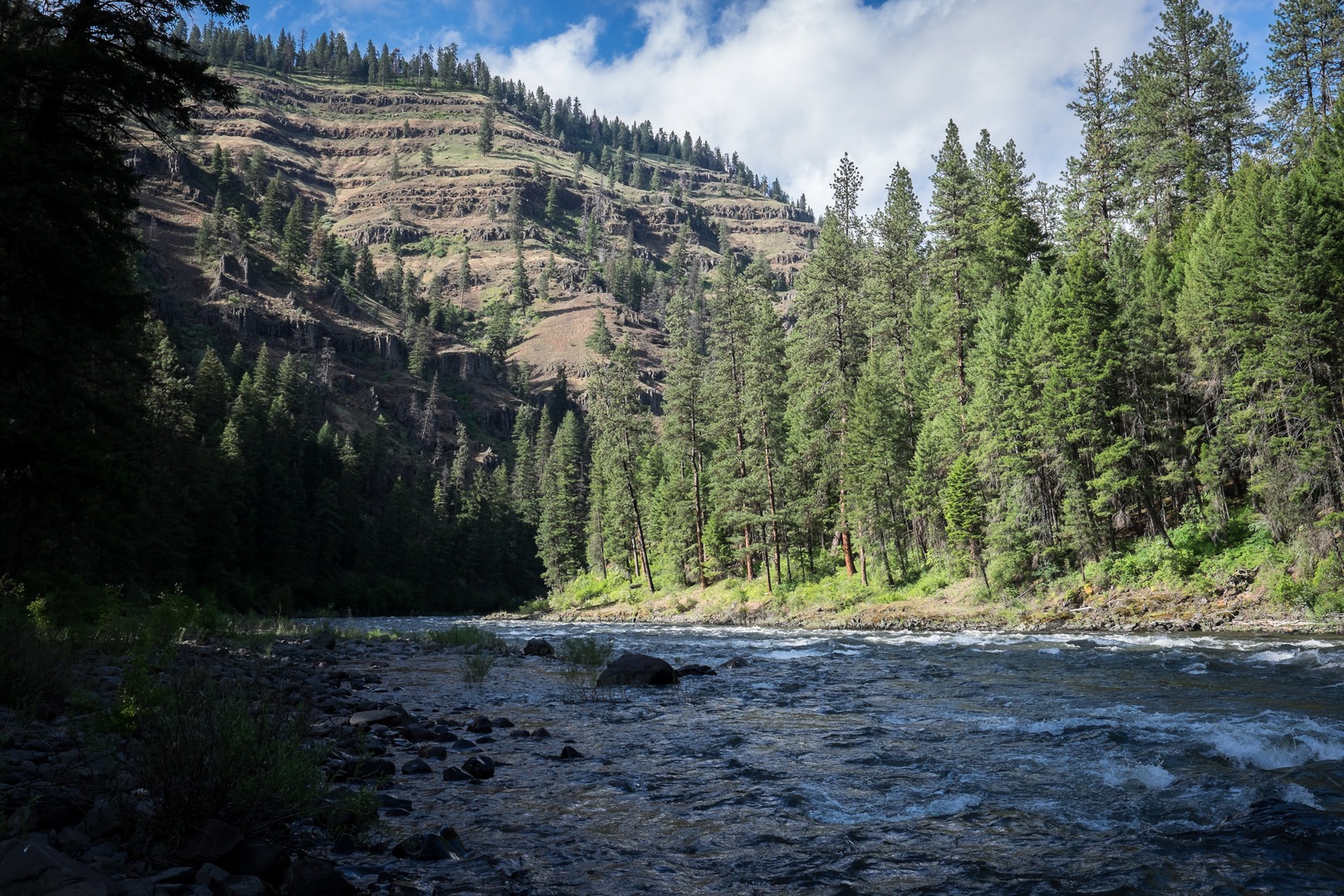You are here
Rivers like the Owyhee, the Rogue, and the John Day tend to receive most of the attention for multi-day rafting opportunities in Oregon. The Grande Ronde gets a little less attention, whether because of the relatively short length of the most popular section or because of the uniform characteristics of the water. Yet these characteristics also make this river a perfect option for long weekends, families, and those with more moderate rowing or multi-day experience. Access is easy, logistics are straightforward, the water is friendly at most flows, and the campsites are numerous.
Additionally, this section of the river, designated Wild and Scenic in 1988, is second-to-none beautiful: Deep canyons, towering ponderosa forests, surreal volcanic formations, wildflowers, and a rich population of wildlife make this river canyon one of Oregon’s gems. Part of the Columbia River Plateau that was generated by immense floods of lava that swept through the region, the Grande Ronde Valley sunk to form a drainage that has persistently cut further into the thick basalt. Boaters can enjoy views of the canyon with walls that rise 1,500 feet to reach the surrounding plateau. Float this quintessentially wild river once and you’ll be hooked.
This float begins on the Wallowa River approximately 10 miles from its confluence with the Grande Ronde. The boat ramp sits in Minam just below the Wallowa’s confluence with the Minam River, and most boaters will approach this area through La Grande. There is a campground at the nearby Minam State Park downstream from the boat ramp. The Minam Store across the river from the boat ramp rents boats, runs shuttles, and offers a modest range of supplies, but it is a good idea to have your trip stocked before arriving at the store and arranging your shuttle.
The float from Minam to Troy totals 45 miles. Remarkably, because of this river’s, 19-feet-per-mile average grade, these miles can easily be covered in two days at flows above 4,000 cfs. That said, the three-day option allows for more opportunities to enjoy the river and the camps; adding a fourth day as a layover in a prime camp can give a more robust multi-day feeling to this modest escape. The current flows at a consistent rate for most of this trip; if it takes an hour to float 6 miles right after you put on, you will probably cover the same distance in the same amount of time after you leave your camp the next day. Eddies are rare, as are major hazards (logjams that appear from year to year are the exceptions). There are a handful of named rapids on this stretch, and the most notable are in the Class II+ range at normal flows.
Camps are relatively well distributed along this river, and are all first-come, first-served. While there are many more camps than those that are indicated on the popular BLM map, there are also stretches without camps. Expect to see other boaters at the launch and in camps on weekends, but crowding is usually only an issue on holiday weekends. Launch mid-week and you may not see another boater on your trip.
Like most Eastern Oregon rivers, the Grande Ronde is normally considered a spring and early summer float, but it does have a longer season than many others. Snow in the Blue Mountains and the Wallowa Mountains melts out considerably by late June, and irrigation demands on this river ramp up as the summer sets in. It isn’t unusual for minimum flows around 1,000 cfs to show up by July, though some years keep a viable water level running closer to August.
Permits are required to float the Grande Ronde, but they are self-issued and available at the Minam put-in. There are no restrictions on boating dates and seasons. Boaters are expected to adhere to the principles of Leave No Trace, and it is fairly obvious that several have decided not to. Please, for the sake of the river and the community that adores it, follow the rules and use a fire pan for all of your fires and a portable toilet system for solid human waste. These are both required by the BLM. Likewise, reduce your impact by selecting already impacted areas for campsites, pack out all of your garbage, and be sure to think of wildlife issues when you store your food for the night.
Logistics + Planning
Current Weather: Powered by Dark Sky



























Comments
Sign In and share them.